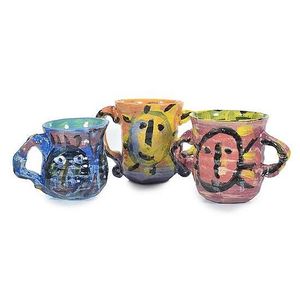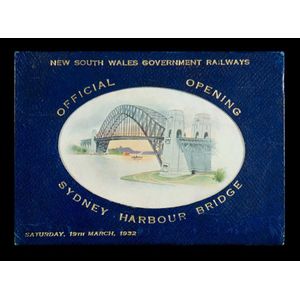1932 Sydney Harbour Bridge Railway Ticket & Timetable
You must be a subscriber, and be logged in to view price and dealer details.
Subscribe Now to view actual auction price for this item
When you subscribe, you have the option of setting the currency in which to display prices to $Au, $US, $NZ or Stg.
- Embossed / Repousse - Embossing, also known as repousse, is the technique of decorating metal with raised designs, by pressing or beating out the design from the reverse side of the object.It is the opposite of chasing, where the decoration is applied from the front. An embossed or repoussed object may have chasing applied to finish off the design.
- Foxing - Foxing is a type of discoloration or staining that occurs on the edges or pages of old books, manuscripts, and other paper-based materials. The term "foxing" comes from the reddish-brown color of the stains, which is similar to the color of fox fur.
Foxing is caused by a variety of factors, including exposure to moisture, high humidity, and oxidation. Over time, these environmental factors can cause the paper to yellow and develop the distinctive brownish stains. The discoloration can also be caused by pollutants in the air, such as smoke and chemicals, or by the presence of certain types of mould or mildew.
Foxing can have a significant impact on the value and appearance of old books and manuscripts, and is often considered a defect. However, some people consider foxing to be a sign of the history and aging of the paper, and view it as a desirable characteristic.
This item has been included into following indexes:
- railways memorabilia
- Sydney Harbour Bridge - souvenir and commemorative items 154
Visually similar items

A sapphire and diamond dress ring with four small shoulder diamonds; 9ct gold. Weight 3.7g.

Three Deborah Halpern mugs, initialled to base, largest 11 cm high (3)

Wallendorf porcelain figure, in the form of a gentleman with tankard and barrel at his feet, height 23 cm

Georg Jensen, Silver Dish, Design No. 620 C, hammered finish, stamped ' Georg Jensen Denmark Sterling 620 C, approx. weight 443 grams diameter 24.3 cm
